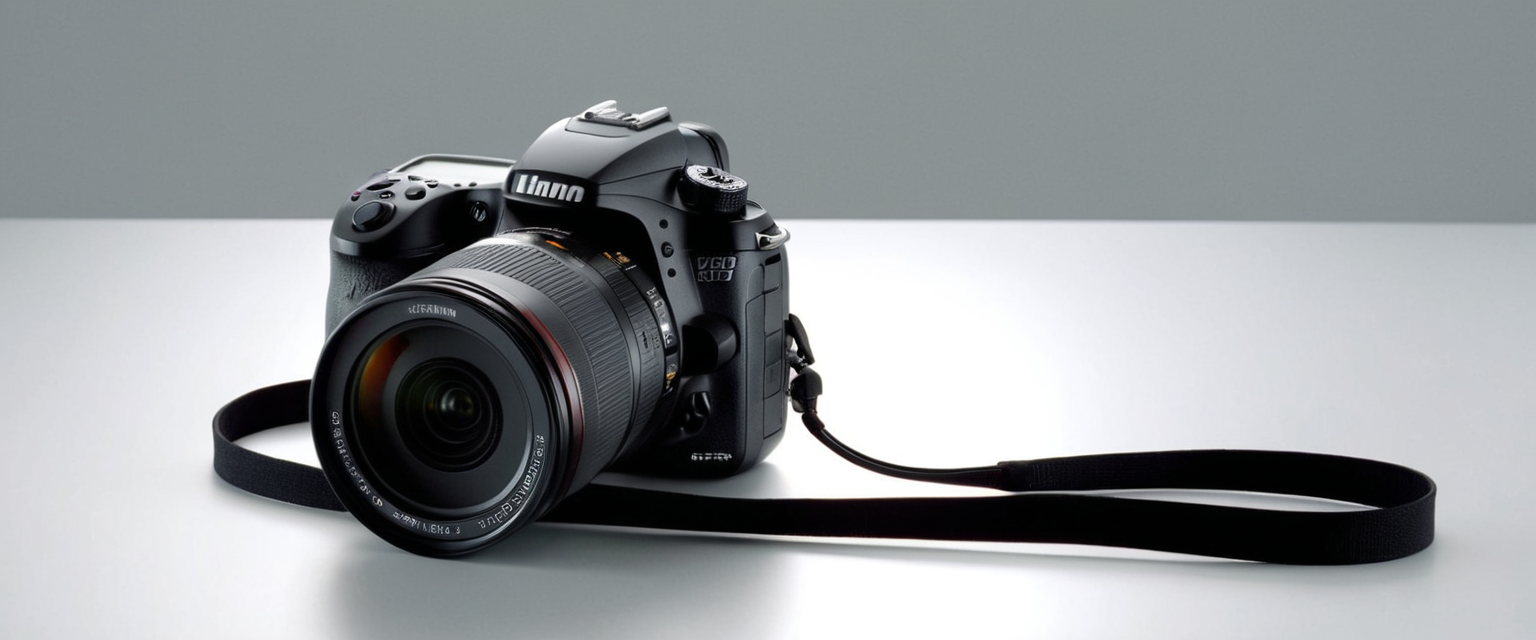
Summary
The LED indicator light on webcams and external cameras serves as a fundamental privacy safeguard, designed to alert users when recording devices are actively capturing video or audio. However, extensive security research and emerging vulnerabilities have revealed that LED indicators represent only a partial and increasingly unreliable defense against unauthorized surveillance. Through firmware manipulation, malware deployment, and hardware exploits, sophisticated attackers can disable LED indicators while maintaining camera access, creating a false sense of security for millions of device users. Furthermore, the absence of unified microphone indicators across consumer devices leaves audio recording vulnerabilities largely unaddressed. This comprehensive analysis examines the effectiveness of camera LEDs as privacy indicators, explores the technical mechanisms by which they can be bypassed, investigates user awareness and perception of these safeguards, and synthesizes emerging best practices for comprehensive privacy protection in an increasingly connected world.
Understanding Camera Indicator Lights: Their Purpose and Design Philosophy
The camera indicator LED represents one of the oldest and most ubiquitous privacy protection mechanisms in consumer electronics, designed with a deceptively simple purpose: to provide visual confirmation that a device’s recording capabilities are actively engaged. This small light, typically integrated into laptop displays or mounted adjacent to external webcams, operates on the fundamental principle that transparency builds trust between users and their devices. When functioning as intended, the LED creates an observable connection between user action and hardware behavior, allowing individuals to maintain awareness of when their visual privacy might be compromised. The philosophical foundation of this design choice reflects a period in technology history when hardware-level security mechanisms were considered sufficiently robust against typical threat models, and when the assumption that LED control would require high-level system privileges seemed reasonable.
The emergence of camera indicators as standard features accelerated throughout the 1990s and 2000s as webcams became increasingly common in consumer computing devices. Manufacturers recognized that as cameras shifted from optional external accessories to integrated components of laptops and smartphones, users needed tangible reassurance that they retained control over visual data capture. The LED served this psychological and functional purpose simultaneously: it provided technical evidence of camera activation while also signaling to manufacturers’ consumers that privacy concerns had been addressed through transparent design. This dual function made the LED appear to be a comprehensive solution to emerging privacy anxieties about surreptitious surveillance through built-in cameras. In the early era of webcam adoption, before sophisticated malware became commonplace and before researchers systematically investigated hardware vulnerabilities, this trust in the LED indicator seemed justified by the technical limitations of consumer-grade computing platforms.
Different manufacturers have approached LED implementation with varying architectural philosophies, though all share the core intention of providing reliable indication of camera use. Some devices connect the indicator light to the camera’s power supply through hardware-level mechanisms, theoretically ensuring that any power flowing to the camera sensor must necessarily illuminate the LED. Other implementations rely on software-based LED control, where the operating system or device firmware manages when the light activates. Still others employ intermediate approaches that attempt to balance the reliability of hardware-based solutions with the flexibility of software control. These architectural choices have profound implications for the security properties of the indicator, as hardware-based implementations theoretically prevent LED disablement without physically destroying the device, while software-based approaches remain vulnerable to any adversary capable of executing code with sufficient privileges on the device.
The Technical Architecture of Webcam LEDs and Their Security Properties
The most commonly discussed webcam LED architecture in security research involves the connection between a camera’s imaging sensor, a microcontroller or integrated processor that manages camera functionality, and an indicator light positioned to be visible to users. In this typical architecture, the LED is designed to illuminate whenever the image sensor transmits data to the microcontroller for processing or transmission to the host system. The engineering logic behind this design is straightforward: if the sensor is capturing images, the LED should light; if the sensor is idle, the LED should remain dark. This approach creates what manufacturers market as a “hardwired” connection, implying that the relationship between sensor activation and LED illumination is immutable and cannot be circumvented through software manipulation alone.
However, security research has systematically demonstrated that this architectural assumption contains a critical flaw when the microcontroller managing the camera operates under firmware that can be modified or reprogrammed. A landmark study conducted by researchers Brocker and Checkoway at Johns Hopkins University revealed that on certain Apple internal iSight webcams used in MacBooks and iMac desktops produced before 2008, the indicator LED could be disabled despite being physically connected to hardware signals from the imaging sensor. Their analysis demonstrated that the microcontroller governing the iSight camera operates under firmware that can be reprogram, and that this firmware determines how the physical hardware signals from the sensor are processed and translated into LED control commands. By modifying this firmware, they showed that an attacker could selectively disable the LED while maintaining full capability to capture video data.
The technical mechanism underlying this vulnerability involves the distinction between hardware interlocks and firmware-based interpretation of hardware signals. While the LED and sensor might be physically connected at the circuit board level, the microcontroller’s firmware determines how it interprets and responds to signals from the sensor. If the firmware can be replaced with modified code that ignores sensor activation signals or deliberately suppresses LED control outputs, then the physical connection becomes functionally irrelevant for practical purposes of surveillance detection. This discovery challenged the fundamental security model of consumer webcams, suggesting that the term “hardwired” LED had been misleading users about the actual security properties of their devices.
Recent research on Lenovo webcam vulnerabilities extends this architectural understanding by demonstrating how modern USB-based cameras with Linux-based systems present similar or even more severe vulnerabilities. The Lenovo 510 FHD and Performance FHD webcams vulnerable to the “BadCam” exploit contain SigmaStar system-on-a-chip processors running Linux, with USB Gadget support that allows the device to present itself as different types of USB peripherals. The firmware update process for these devices lacks cryptographic protection, meaning that an attacker with sufficient access to the host system can reflash the camera’s firmware with arbitrary code without providing valid digital signatures or authentication credentials. This Linux-based architecture, while offering flexibility and modern software capabilities, simultaneously introduces firmware modification vectors that are substantially more accessible than those available on older camera implementations.
The fundamental architectural lesson from these various implementations is that no webcam LED provides reliable privacy protection if an attacker can execute code at the privilege level capable of modifying camera firmware or intercepting the signals between camera components. The physical placement and power provisioning of the LED become secondary considerations compared to the computational capabilities and firmware updateability of the device managing camera operation. A LED that is physically connected to camera power supplies but controlled by modifiable firmware is functionally equivalent, from a security perspective, to a LED that is entirely software-controlled.
Exploiting and Bypassing LED Indicators: Known Vulnerabilities and Attack Methodologies
The systematic vulnerability of webcam LED indicators to bypass attempts has been demonstrated across multiple device platforms and architectures, revealing a consistent pattern of security weakness that affects both legacy systems and surprisingly recent consumer devices. Cybersecurity expert Andrey Konovalov, who presented research at the 2024 POC conference, documented his methodology for disabling the LED on a Lenovo ThinkPad X230 laptop through systematic USB fuzzing techniques. His approach involved sending unexpected USB requests to the camera device to discover undocumented vendor-specific commands that could manipulate camera firmware behavior. Through careful experimentation and reverse engineering, Konovalov discovered that the webcam’s firmware consists of two distinct components—a Boot ROM and an SROM (Serial ROM)—and that by accessing and rewriting sections of the SROM firmware, arbitrary code could be executed on the camera device.
The crucial breakthrough in Konovalov’s research involved identifying the specific firmware locations responsible for controlling the LED indicator and tracing this functionality to a particular pin on the camera’s controller chip. His analysis revealed that the LED pin could be independently controlled through firmware modifications, independent of actual camera operation status. This finding demonstrated that even in devices where hardware connections theoretically should prevent independent LED control, the firmware layer provides sufficient flexibility for attackers to suppress the visual indication of camera activation. The methodological significance of this research extended beyond the specific ThinkPad X230 model; Konovalov observed that the underlying principles of his approach could potentially apply to other devices with similar USB camera architectures, suggesting a systematic class of vulnerabilities affecting many consumer laptops from that manufacturing era.
Historical research provides additional evidence of LED bypass vulnerabilities across different device classes and time periods. The 2014 iSeeYou research, which created a proof-of-concept application for disabling MacBook iSight LEDs, employed a different but complementary methodology. Rather than using USB fuzzing, researchers reverse-engineered the iSight firmware by analyzing the microcontroller’s binary code, identifying the specific instructions and memory locations responsible for LED control. They then developed modified firmware that preserved the camera’s video capture functionality while surgically removing the LED control logic. This approach required significant reverse engineering effort and depended on analyzing undocumented proprietary firmware, but it demonstrated that motivated researchers could overcome the closed-source nature of device firmware to accomplish LED disablement.
More recent “BadCam” research extends these vulnerabilities to contemporary consumer devices, specifically Lenovo Linux-based webcams. This attack differs from earlier exploits in that it demonstrates how an attacker with remote code execution capabilities on a host system can leverage the camera’s accessible firmware update mechanism to implant malicious code. Once the camera firmware is compromised, the device can be repurposed to function as a BadUSB device, capable of emulating keyboards, network adapters, or other USB peripherals. Importantly, this transformed camera would maintain its apparent external form and appearance as a normal webcam while actually serving as a covert attack vector against the host system. The LED, if the attacker chooses to disable it, becomes irrelevant for surveillance purposes; the compromised camera can simultaneously execute keyboard injection attacks while remaining visually inactive.
The methodological diversity of these attacks—from USB fuzzing to static firmware analysis to firmware reflashing vulnerabilities—suggests that LED bypass represents a fundamental class of vulnerabilities rather than isolated exploits applicable only to specific device models. While the technical mechanisms vary across implementations, the underlying principle remains consistent: if an attacker can achieve sufficient control over the device hosting or controlling the camera, suppressing the LED indicator becomes a secondary technical achievement once camera activation itself has been achieved.
The Microphone Indicator Problem: The Asymmetry of Audio and Video Privacy Protections
While extensive security research attention has focused on visual privacy threats and webcam LED indicators, a parallel and equally concerning vulnerability exists in the realm of audio privacy. Consumer testing by reports from Consumer Reports revealed a systematic pattern across external webcam models where indicator lights signal camera activation but provide no corresponding indication of microphone use. In testing of seven popular external webcam models including Aukey 1080p, Lenovo Essential FHD, Logitech C270 HD, C920 and Brio, and Razer Kiyo, six of seven devices exhibited the same problematic behavior: the status indicator light would extinguish when users disabled the camera through software controls, even while the microphone remained active and capable of recording audio. Only the Microsoft LifeCam Studio performed as users might reasonably expect, with the indicator light remaining illuminated when either camera or microphone was in use.
This asymmetry in privacy indication represents a fundamental design gap in consumer device security architecture. Users have been conditioned through decades of webcam evolution to interpret an extinguished camera LED as assurance of privacy—visual privacy in particular. However, this interpretation overlooks the fact that modern integrated webcam solutions combine both video and audio capture into unified devices, often with entirely independent control mechanisms. An attacker who has compromised a device might selectively disable video capture while maintaining microphone access, knowing that users observing the darkened LED would assume comprehensive privacy protection when in fact audio eavesdropping remains possible. This attack scenario transforms the LED from a privacy protection mechanism into an instrument of deception, actively undermining user awareness of actual recording status.
The absence of unified microphone indicators across consumer platforms reflects a combination of technical, commercial, and historical factors. Historically, computers featured microphones primarily as optional add-ons or low-priority features, receiving minimal security and privacy consideration compared to visual media capture. As voice-interface and always-on voice assistant functionality became mainstream through consumer devices like Amazon Echo, Google Home, and Apple’s Siri, privacy implications of microphone-based surveillance increased dramatically, yet hardware indicators for microphone activation remained fragmented and inconsistent. Some devices use software-based indicator icons in status bars or notification areas, but these software indicators are themselves vulnerable to manipulation by malware or compromised applications with sufficient privileges.
Research into microphone-based attacks highlights the particular urgency of developing reliable audio privacy protections equivalent to visual privacy safeguards. Academic research presents methods for defending against microphone-based eavesdropping through injection of specialized obfuscating “babble noise” that disrupts automated speech recognition systems while remaining inoffensive to legitimate users. These defensive techniques acknowledge that microphone security cannot rely on hardware indicators alone, given their frequent absence or unreliability. Researchers note that unlike cameras, which users can physically obscure with tape or covers to achieve certainty about visual privacy protection, microphones present a more complex challenge for individual users to defend against without either disabling devices or accepting the risk of compromised audio capture.
The fragmentation of microphone privacy protections across different platforms and device types has led to inconsistent user experiences and reasonable expectations. Windows operating systems provide microphone icons in the notification area of the taskbar, though these software-based indicators offer no protection against compromised system software. MacOS displays a recording indicator light in Control Center when microphone access occurs, similarly representing a software-based solution dependent on system integrity. Android 12 and higher devices display green camera and microphone indicators with highest visual priority in the status bar, with mandatory implementation across all devices running this operating system version. However, even these system-level indicators, while more robust than individual application controls, remain subject to potential manipulation by malware with system-level privileges.
User Perception, Awareness, and the Cognitive Limitations of LED-Based Privacy Indicators
The practical effectiveness of camera LED indicators as privacy protection mechanisms depends not only on their technical reliability but also on user awareness and perception of their significance. However, systematic research into user attention to visual indicators reveals a troubling disconnect between the assumed function of LED indicators and actual user observation patterns. A landmark study examining webcam indicator effectiveness found that during typical computer-based tasks, fewer than half of participants (45%) even noticed the existing LED indicator when it was illuminated, despite the indicator’s proximity to the camera lens and presumed salience. The situation deteriorated dramatically when users engaged in non-computer tasks while seated in front of their devices; in this context, only 5% of participants noticed the indicator light being active.
These empirical observations carry profound implications for the assumed privacy protection role of LEDs. If the majority of users fail to notice even a functioning LED indicator under normal circumstances, then the technical distinction between a reliable hardware-based LED and a vulnerable firmware-controlled LED becomes largely irrelevant from a user awareness perspective. Both functional and compromised indicators equally fail to provide the visual cue that theoretically should alert users to unwanted recording activity. The research findings suggest that LEDs primarily protect against threats from attackers who are either unaware of LED disablement capabilities or who are constrained by technical limitations that prevent sophisticated firmware manipulation, while providing minimal protection against skilled adversaries who have achieved sufficient system access to disable indicators.
Furthermore, user expectations about LED indicators demonstrate systematic misalignment with technical reality. Many users interpret an unlit camera LED as definitive evidence that recording is not occurring, creating a false confidence in privacy protection that exceeds the actual security guarantees provided by the hardware. This psychological state—sometimes termed a “false sense of security”—may actually increase vulnerability to certain threat scenarios by reducing user vigilance and skepticism about device behavior. Users who have accepted the reliability of LED indicators may become less likely to investigate unexpected processes, unusual system behavior, or network anomalies that might indicate compromised cameras, precisely because the trusted LED provides reassurance that visual privacy is protected.
The sophistication gap between user understanding and actual technical capability also creates vulnerability to social engineering and manipulation. A sophisticated attacker might deliberately ensure that the camera LED remains visible during initial compromise stages, thereby earning user trust and reducing the likelihood of device inspection or security auditing. Only once sufficient system access has been established would the attacker disable the LED and conduct surveillance with reduced risk of user-initiated detection. This temporal strategy exploits the user’s reasonable but ultimately naive assumption that an illuminated LED indicates trustworthy system behavior.
Research into visual indicator effectiveness across different platforms reveals that even when users do notice indicators, the significance and meaning users attribute to them varies considerably based on context, device type, and user technical literacy. Some users interpret the absence of an indicator light as definitive privacy protection, while others remain skeptical of any software or hardware indicator, preferring physical barriers like tape or covers. Still others appear essentially indifferent to indicators, suggesting that for this population, LED presence or absence has minimal effect on privacy decision-making. This heterogeneity in user response suggests that designing privacy protection around user perception of indicators is inherently fragile, as different users maintain different mental models of what indicators mean and what level of protection they provide.
Beyond LEDs: Comprehensive Privacy Defense Strategies and Alternative Mechanisms
The limitations and vulnerabilities of LED-based privacy protection have spurred the development and refinement of alternative defense mechanisms that operate at different layers of system architecture and threat model. These alternative approaches can be understood as falling into several distinct categories, each addressing different aspects of the privacy protection problem and operating with different assumptions about attacker capabilities and user risk tolerance.

Physical Barriers and Mechanical Solutions
Physical occlusion of camera lenses through covers, tape, or mechanical shutters represents perhaps the most straightforward and technically reliable approach to preventing visual surveillance through compromised webcams. The appeal of this approach lies in its fundamental immunity to software exploits and firmware modifications; no attacker can circumvent an opaque piece of tape covering the lens, regardless of the sophistication of their malware or their level of system compromise. This simple technical guarantee has led cybersecurity professionals and even law enforcement officials to endorse camera covering as a basic privacy hygiene practice.
However, mechanical barriers present practical limitations that have driven continued research into hybrid approaches combining physical and technical protections. Permanent tape or sticker covers reduce usability when users actually want to conduct video calls or use camera-based features legitimately. Users must repeatedly remove and replace covers, creating friction that reduces compliance with covering practices over time. Additionally, mechanical covers address only visual privacy; they do nothing to protect against microphone-based surveillance, which remains an equal or greater threat in many contexts.
Smart webcam covers represent an attempt to overcome the usability limitations of purely mechanical solutions by automating the covering and uncovering process based on device status indicators. These motorized systems monitor whether a camera is actively engaged through software signals, and automatically deploy a mechanical shutter when the camera is detected as inactive. Theoretically, this approach combines the technical reliability of mechanical occlusion with the convenience of automated operation. However, research into smart cover security reveals an elegant counter-attack: an adversary who has achieved sufficient system access to compromise the camera could simultaneously manipulate the status signals that the smart cover monitors, causing the automated shutter to remain open while the camera operates under attacker control. The smart cover’s reliance on software status indicators reintroduces vulnerability to the exact threat that mechanical covers were designed to eliminate.
Hardware Kill Switches and Circuit-Level Disablement
More radical approaches to camera privacy protection involve hardware-level mechanisms that physically disconnect power to camera and microphone components, eliminating any possibility of functionality regardless of software state or firmware compromise. Some specialty manufacturers, particularly Purism with their Librem line of privacy-focused laptops, have incorporated physical switches that sever the circuit to webcams and microphones at the hardware level. These switches provide absolute guarantee of camera and microphone disablement from a user perspective; when the switch is in the off position, there is no mathematical or technical possibility of device activation short of physically opening the laptop to rewire the components.
The appeal of hardware kill switches is substantial for users with high security requirements or extreme privacy concerns. Unlike software-based controls that can be circumvented by sufficiently privileged malware, hardware kill switches operate independently of operating system state or software configurations. A user can activate the switch and know with certainty that cameras and microphones are completely disconnected from the rest of the system. However, these solutions remain specialized and expensive, reflecting both the manufacturing complexity of integrating physical switches and the reduced market demand compared to mainstream consumer devices.
Interestingly, some manufacturers who initially committed to hardware kill switch development have subsequently abandoned these efforts in favor of firmware-based disablement, citing engineering and reliability challenges. One manufacturer reported that prototype hardware kill switches frequently failed to engage reliably, exhibited inconsistent switching behavior across repeated activations, and proved substantially more expensive to manufacture than initially projected. These practical engineering challenges suggest that while hardware kill switches represent theoretically superior privacy protection, the gap between theory and practical implementation remains significant.
Firmware-Based and Software-Level Control Mechanisms
Intermediate approaches to privacy protection operate at the firmware and software levels rather than the hardware level, providing technical controls that do not require physical switches or mechanical modifications. These approaches attempt to leverage the increasing sophistication of device firmware and operating system capabilities to provide privacy controls that are more reliable than simple LED indicators while remaining technically feasible and economically viable compared to hardware kill switches.
Windows operating systems provide firmware-based camera privacy controls that can be configured through BIOS/UEFI settings on compatible devices, allowing users to completely disable camera and microphone functionality at the system level. This approach prevents any operating system or application from accessing these devices, though it requires rebooting the device and accessing BIOS settings to toggle the controls on and off. Linux-based privacy-focused systems like Purism’s PureOS offer options to physically remove camera and microphone modules entirely from purchased devices, allowing users to substitute external cameras and microphones as needed while completely eliminating the possibility of surreptitious surveillance through integrated components.
Modern privacy indicator implementations in Android 12 and higher systems represent a more refined approach to software-based privacy protection through transparency mechanisms. Rather than attempting to prevent unauthorized access through architectural controls, these systems instead provide users with real-time notification of when applications access camera and microphone resources. The privacy indicators display when apps are actively using these sensors and maintain a history of recent access, allowing users to detect suspicious behavior by observing which applications request access to cameras and microphones and when these accesses occur. This transparency-based approach acknowledges that preventing all unauthorized access may be technically infeasible, but ensuring that any unauthorized activity becomes visible to users provides a meaningful layer of protection through user vigilance.
Operating System and Platform-Level Protections
Beyond device-specific controls, operating systems increasingly incorporate privacy protections that apply across all applications and hardware components. MacOS implements an application permission model where apps must explicitly request user permission before accessing camera or microphone resources, and users can subsequently revoke permissions for any app through system settings. The operating system enforces these permissions at the kernel level, preventing applications from accessing camera and microphone resources regardless of whether they have been granted permission by the user. This architectural approach represents a fundamental departure from earlier operating system designs where applications could often access hardware devices with minimal user notification or control.
Windows 11 provides similar application permission controls for camera and microphone access, with visibility into which apps have recently accessed these devices and options to revoke permissions for individual applications. Windows also supports hardware switches on devices equipped with them, and provides notification through system UI when camera or microphone access occurs. The operating system implements these protections partially through software-based controls on the host system and partially through firmware-level mechanisms that control access at the device level.
These operating system-level protections substantially raise the technical barriers for covert surveillance while remaining transparent and non-disruptive to legitimate use cases. An attacker wishing to conduct surveillance through an integrated camera or microphone must overcome not only the physical compromise of individual devices but also the architectural controls implemented at the operating system level. This defense-in-depth approach acknowledges that no single protection mechanism provides complete safety, but layering multiple protections across different system levels creates substantially more robust protection than any single approach alone.
Hardware and Firmware Protections in Modern Devices: Evolution and Remaining Vulnerabilities
The evolution of device architecture and firmware design over the past fifteen years reflects accumulating evidence of vulnerabilities in earlier systems and increasingly sophisticated design approaches intended to prevent LED bypass and unauthorized camera access. Modern devices incorporate multiple layers of protection, though each layer has proven subject to specific attack methodologies that demonstrate the ongoing cat-and-mouse competition between defenders and attackers in the privacy domain.
Modern Apple Architecture and Claimed Hardwired Protections
Apple has implemented substantial firmware and hardware improvements to its camera architecture since the vulnerabilities in pre-2008 iSight cameras became public knowledge. Current generation MacBook Pro models incorporate design features intended to prevent the types of LED bypass attacks documented in academic research, including custom secure enclave processors for handling sensitive device operations and cryptographic signature verification for camera firmware updates. Apple’s official position holds that camera LED indicators on current devices are connected to the camera’s power circuit in such a way that it becomes physically impossible to activate the camera without illuminating the LED, assuming the LED itself has not been physically damaged.
However, skepticism about these claims persists within the security research community, driven partially by Apple’s history of overstating security guarantees regarding camera LED protection. Earlier generations of MacBook Pro models featured firmware-based LED control that was vulnerable to software manipulation, yet Apple marketing materials claimed hardwired protections, creating confusion about which device generations actually incorporated hardware-level LED protections. More recent architectural improvements may have genuinely eliminated the LED bypass vulnerabilities present in earlier systems, but the credibility gap established through earlier overstated claims creates justified skepticism about whether current claims represent fundamental technical improvements or merely more sophisticated implementations of firmware-controlled LEDs.
Lenovo and Linux-Based Camera Architecture Vulnerabilities
Lenovo’s Linux-based webcams introduced new vulnerability classes distinct from but potentially more severe than the firmware modification approaches affecting earlier non-Linux systems. The BadCam research demonstrated that Lenovo’s 510 FHD and Performance FHD webcam models lack cryptographic signature verification for firmware updates, allowing attackers with local system access to reflash camera firmware without presenting valid authentication credentials. This vulnerability proved particularly concerning because the Linux-based camera architecture supports USB Gadget extensions that allow the compromised camera to emulate other USB device types, transforming the camera into a BadUSB-capable keyboard or network interface while maintaining its external appearance as an ordinary webcam.
Lenovo subsequently released firmware updates addressing the BadCam vulnerability, implementing cryptographic signature verification for firmware updates and limiting the firmware update process to properly authenticated upgrade packages. However, this response illustrates the perpetual game of patch and counter-exploit: once manufacturers identify vulnerabilities and implement protections, the question remains whether attackers may identify alternative attack vectors or whether the patches themselves might introduce new vulnerabilities. The specific case of Lenovo cameras demonstrates that firmware-based protections, while substantially improving security compared to completely unprotected devices, do not provide the same absolute guarantees as truly immutable hardware-level defenses would offer.

Windows Hardware-Enforced Privacy Protections
Windows-equipped devices increasingly incorporate hardware and firmware mechanisms for enforcing camera privacy controls beyond what software alone can guarantee. Microsoft’s guidance recommends that devices implement privacy shutters—either mechanical or electromechanical—that are physically incapable of being overridden by software, similar in principle to hardware kill switches but implemented in a more integrated fashion. When such shutters are closed, the camera cannot capture valid images regardless of sensor state or firmware configuration. The shutter’s mechanics operate independently of the camera’s electrical control circuits, ensuring that occlusion depends on physical position rather than firmware-controlled commands.
Microsoft’s architecture guidance specifies that LED indicators must remain illuminated whenever the camera is operating, regardless of whether the privacy shutter is open or closed, ensuring that the LED continues to provide information about system activity even when mechanical occlusion prevents actual image capture. This approach attempts to preserve the informational value of the LED—alerting users to camera activation attempts—while the shutter mechanism provides absolute guarantee against successful image capture. The distinction between camera activation and successful image capture acknowledges that preventing all activation attempts may be technically infeasible, but preventing successful capture is achievable through mechanical barriers.
Recommendations and Best Practices for Comprehensive Webcam and Microphone Privacy
The synthesis of research evidence, vulnerability analysis, and implementation experiences from multiple platforms and device manufacturers suggests several evidence-based recommendations for achieving robust privacy protection against unauthorized surveillance through integrated camera and microphone devices.
Multi-Layered Defense Architecture
No single protection mechanism—whether LED indicators, software controls, firmware protections, or mechanical barriers—provides complete protection against sophisticated adversaries or all possible attack vectors. Instead, effective privacy protection requires layering multiple independent controls such that compromise of any single layer does not completely eliminate privacy protection. A practical implementation of this principle might include mechanical camera covers for visual privacy assurance, operating system permission controls that prevent applications from accessing cameras without explicit user authorization, firmware mechanisms that provide authentication and verification for any updates to camera functionality, and regular operating system security updates that patch known vulnerabilities in the software layer managing camera access.
Microphone Protection Parity with Visual Privacy
Current consumer device architecture often provides substantially less protection against microphone-based surveillance than against visual surveillance, reflecting the historical prioritization of cameras in privacy discussions. This asymmetry should be actively corrected through hardware and firmware mechanisms that provide microphone controls equivalent in reliability and functionality to camera controls. Users should have access to reliable indicators of microphone activation equivalent to camera LED indicators, should have ability to easily disable or cover microphones when not needed, and should benefit from operating system permission controls for microphone access equivalent to those controlling camera functionality.
User Education and Skepticism Regarding Visual Indicators
Users should be educated about the actual reliability and limitations of camera LED indicators rather than encouraged to treat them as absolute guarantees of privacy. Understanding that LEDs can be disabled through firmware modification, that most users fail to notice indicators even when present and functional, and that indicators provide information only about video capture while leaving audio capture unprotected would allow users to make more informed decisions about privacy protection mechanisms.
Regular Security Updates and Firmware Verification
Devices should be updated regularly with security patches addressing known vulnerabilities in camera and microphone functionality, and users should prioritize these security updates alongside more visible operating system updates. Additionally, users should be cognizant of firmware verification mechanisms and should verify that any camera firmware updates they apply have been digitally signed by trusted manufacturers rather than installing suspicious or unsigned updates that might represent attacker-controlled firmware modifications.
Bringing It All Into View: The Full Spectrum of Camera Indicators
Camera LED indicators represent the oldest and most ubiquitous privacy protection mechanism for integrated webcams and external cameras, yet decades of security research have systematically revealed the fundamental limitations of relying on LEDs as a primary defense against unauthorized surveillance. The indicators were designed in an era when firmware modification seemed infeasible for typical attackers and when threat models did not fully account for sophisticated malware or hardware-level exploits. Modern research has demonstrated that determined attackers can disable LEDs while maintaining camera functionality through firmware manipulation on vulnerable devices, that the majority of users fail to notice LED indicators even when present and operational, and that LEDs provide no protection against microphone-based eavesdropping despite the increasing prevalence of integrated audio capture capabilities.
The evolution from simple LED-based protections toward multi-layered defense mechanisms incorporating hardware-level protections, firmware verification, operating system permission controls, and mechanical barriers reflects industry recognition that no single protection mechanism adequately addresses modern surveillance threats. Contemporary devices increasingly incorporate combinations of these approaches, though fragmentation across different manufacturers and platforms means that users cannot assume consistent protection levels across their device ecosystem.
The fundamental lesson from the history of webcam privacy protection is that technical security mechanisms must be complemented by user awareness, realistic threat modeling, and design approaches that acknowledge the fallibility of any single protective layer. Users who understand that LED indicators represent partial rather than comprehensive privacy protection, who layer multiple independent controls, and who remain skeptical of marketing claims about “hardwired” protections will achieve more robust actual privacy than users who trust blindly in any single mechanism. As device architectures continue to evolve and attackers develop increasingly sophisticated exploitation techniques, the need for continued security research, transparent communication about genuine protection levels, and collaborative improvement of privacy protection across device manufacturers will remain paramount to maintaining reasonable privacy protection for the majority of computer users whose devices integrate cameras and microphones into their daily experience.
Protect Your Digital Life with Activate Security
Get 14 powerful security tools in one comprehensive suite. VPN, antivirus, password manager, dark web monitoring, and more.
Get Protected Now





